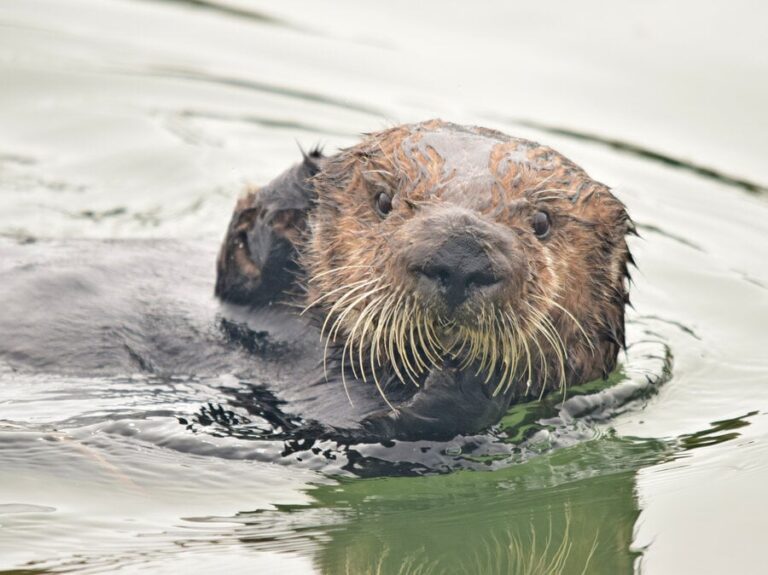Photo: A sea otter in the estuarine water of Elkhorn Slough, Monterey Bay, Calif. Emma Levy
The California sea otter, once hunted to the edge of extinction, has staged a thrilling comeback in the last century. Now, a team of scientists has discovered that the otters’ success story has led to something just as remarkable: the restoration of their declining coastal marsh habitat.
“To me, it’s quite an optimistic message,” says Christine Angelini, a coastal ecologist at the University of Florida and one of the authors of the study published in the journal Nature.
It’s a demonstration, she says, “that the conservation of a top predator can really enhance the health and the resilience of a system that’s otherwise under a large portfolio of stress.”
The demise of Elkhorn Slough
Elkhorn Slough in Monterey Bay, California is the second-largest estuary in the U.S. For decades, it was falling apart.
“They opened up a new harbor in the 1940s that created this full permanent opening to the ocean,” says Brent Hughes, a marine ecologist at Sonoma State University. “And so all this new tidal energy was eroding away the marshes.”
Nutrient runoff led to massive algal blooms that smothered the marshes. And sea level rise was slowly drowning them.
“It’s weird, right? Plants in the ocean, drowning,” says Hughes. “But that’s what salt marshes do if they can’t accrete their sediments and build up.”
Finally, there was a dramatic surge in the numbers of shore crabs populating the marsh.
“When they’re not super abundant, they can be positive,” he says. “They’re burrowing, aerating the soils. But when they’re left unchecked by predators, then they can just explode. And that’s when they start doing damage.”
In addition to burrowing, the crabs eat the roots and underground stems of the marsh plants. “What this does is [it] destabilizes the banks — the shoreline,” says Hughes, “and it just causes this erosion.” Large chunks of marsh — plants, dirt, and all — began to calve off steadily into the water. The ecosystem was facing death by a thousand cuts.
Salt marshes are important. They protect the […]
Full article: www.capradio.org

